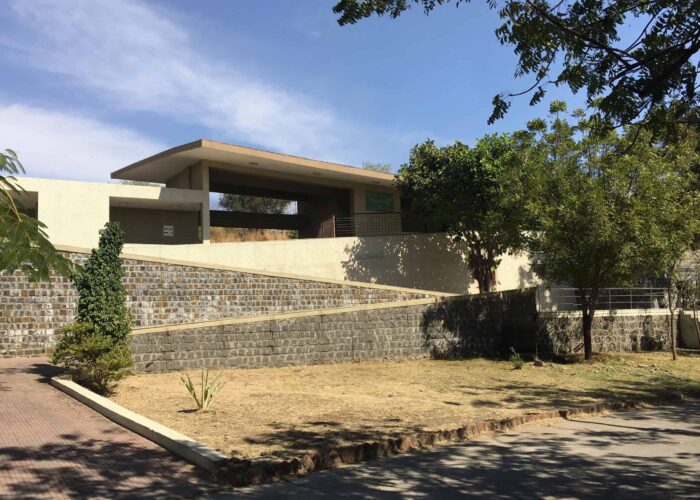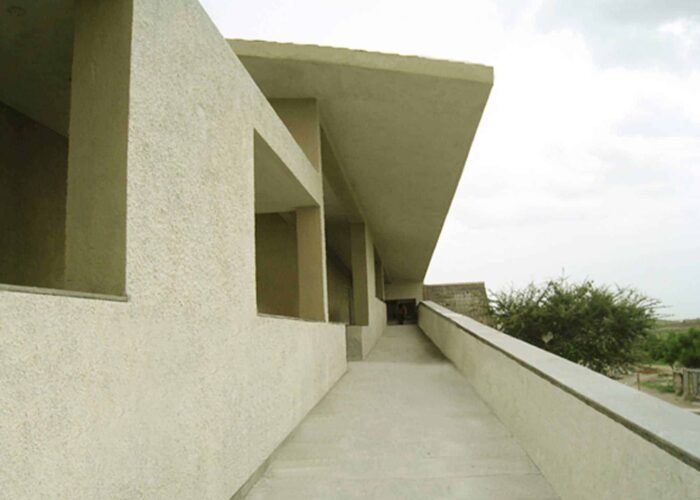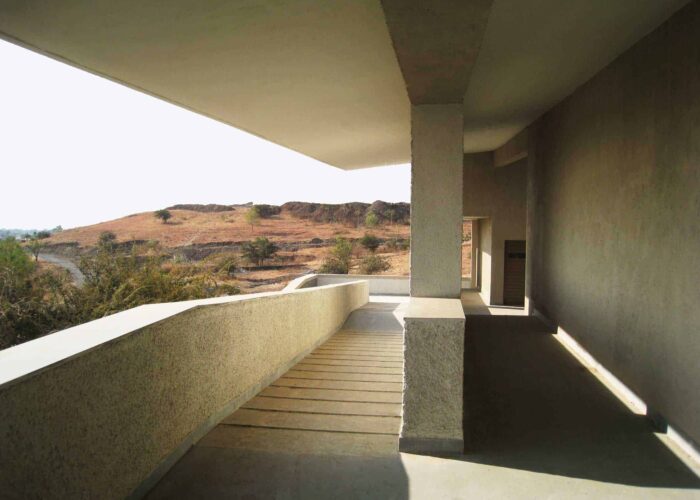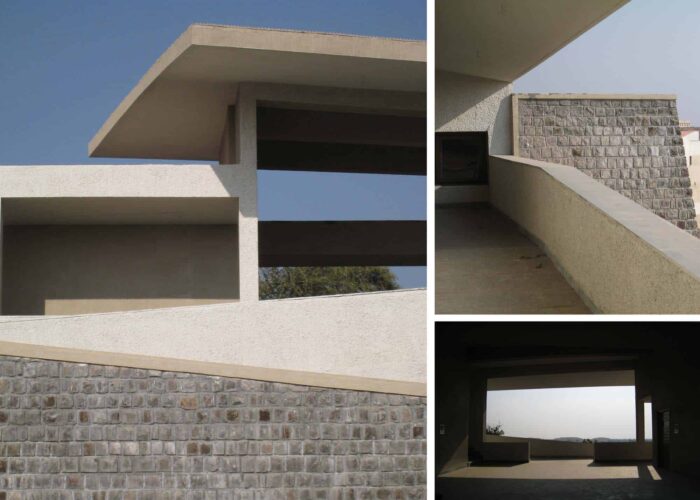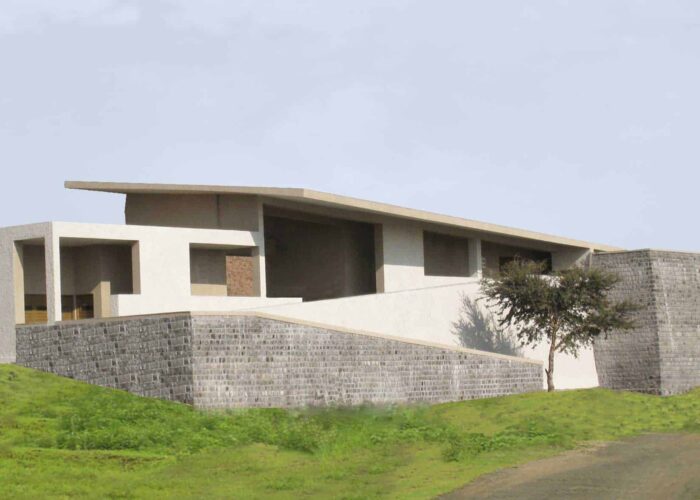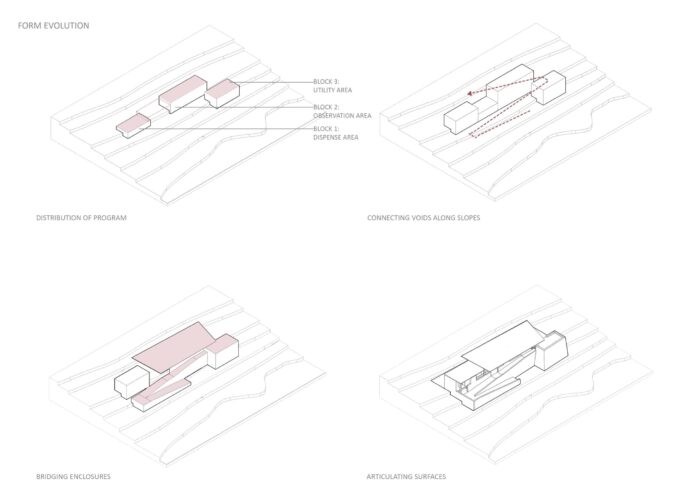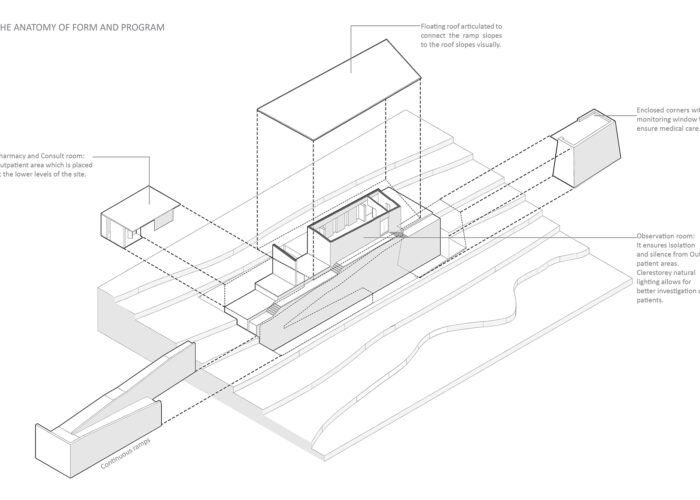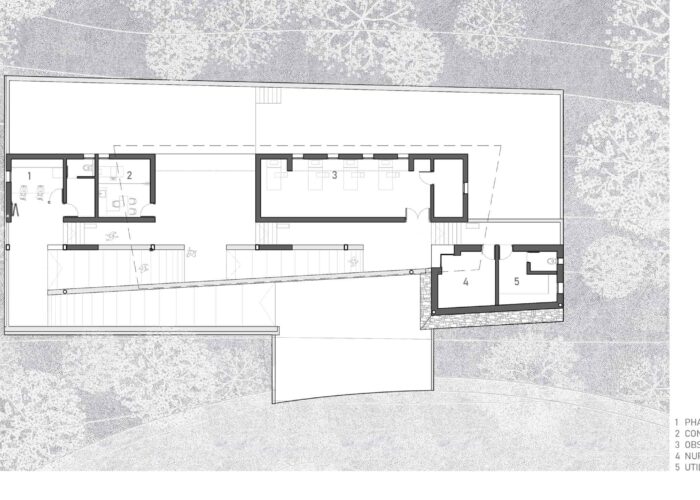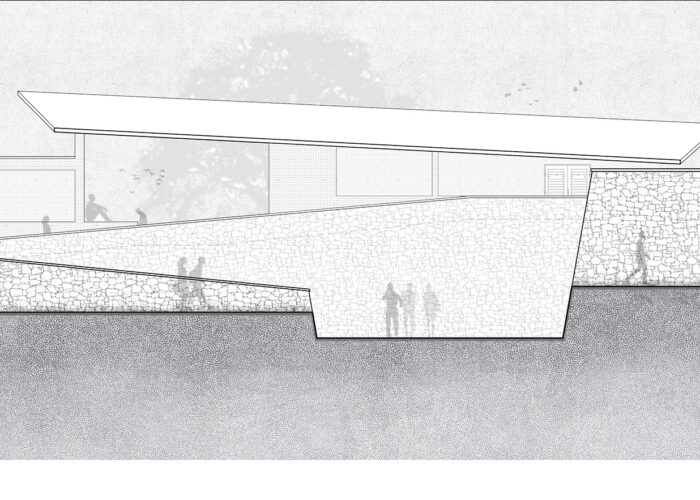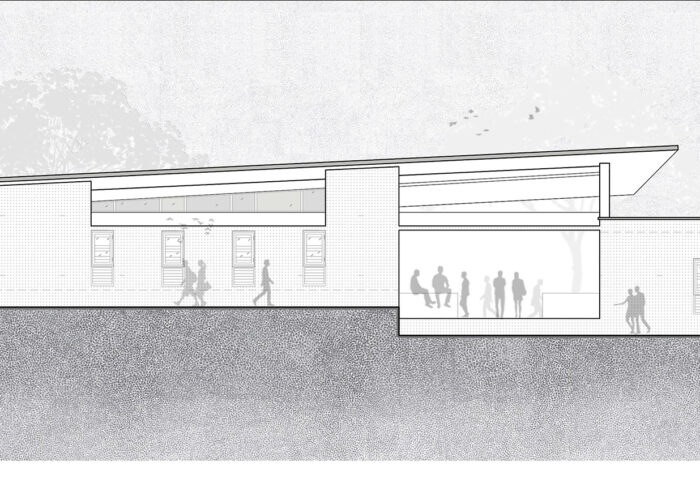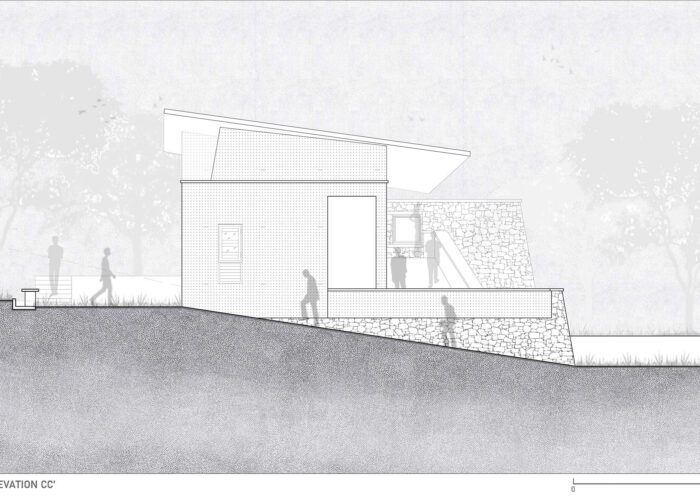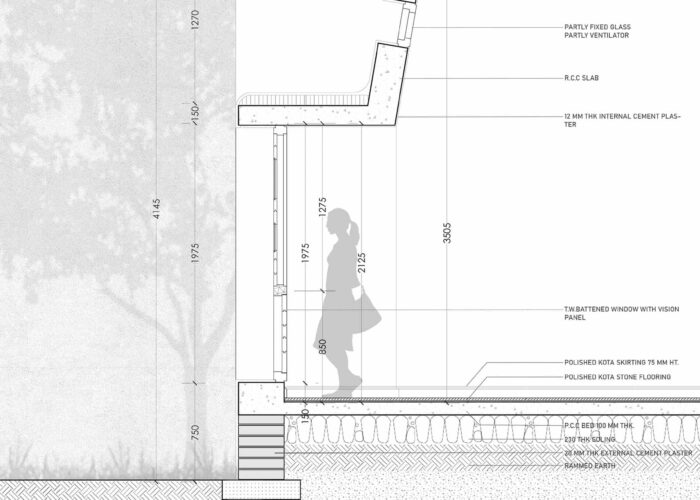Health Care | Master Planning
M.G.A.H.V. Health Centre
Mahatama gandhi antarrashtriya hindi vishwavidyalya primary health centre
Awards
Winner in national open competition in 2002; 20th JK Architect of the year commendation award for group housing
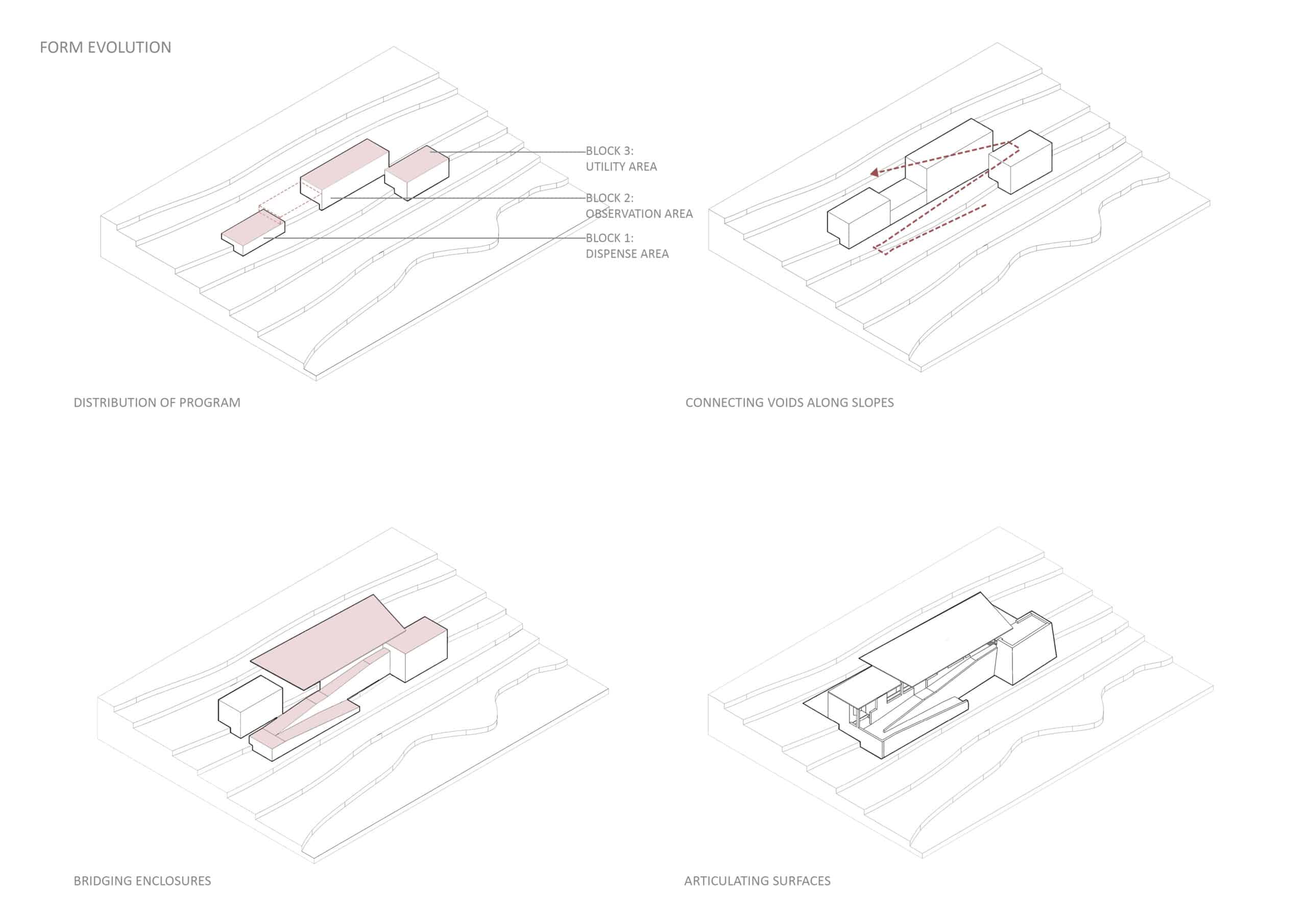
Context and Concept
The campus is situated on the periphery of a small town, Wardha, and this building serves as a primary health center for the entire campus community. The campus is located in challenging terrain and the building design negotiates the slopes that provides easy access to the patients. The design approach is one that negotiates and responds to multiple aspects such as the site, function and universal standandards of the building type, and aesthetics all at once into one holistic solution.
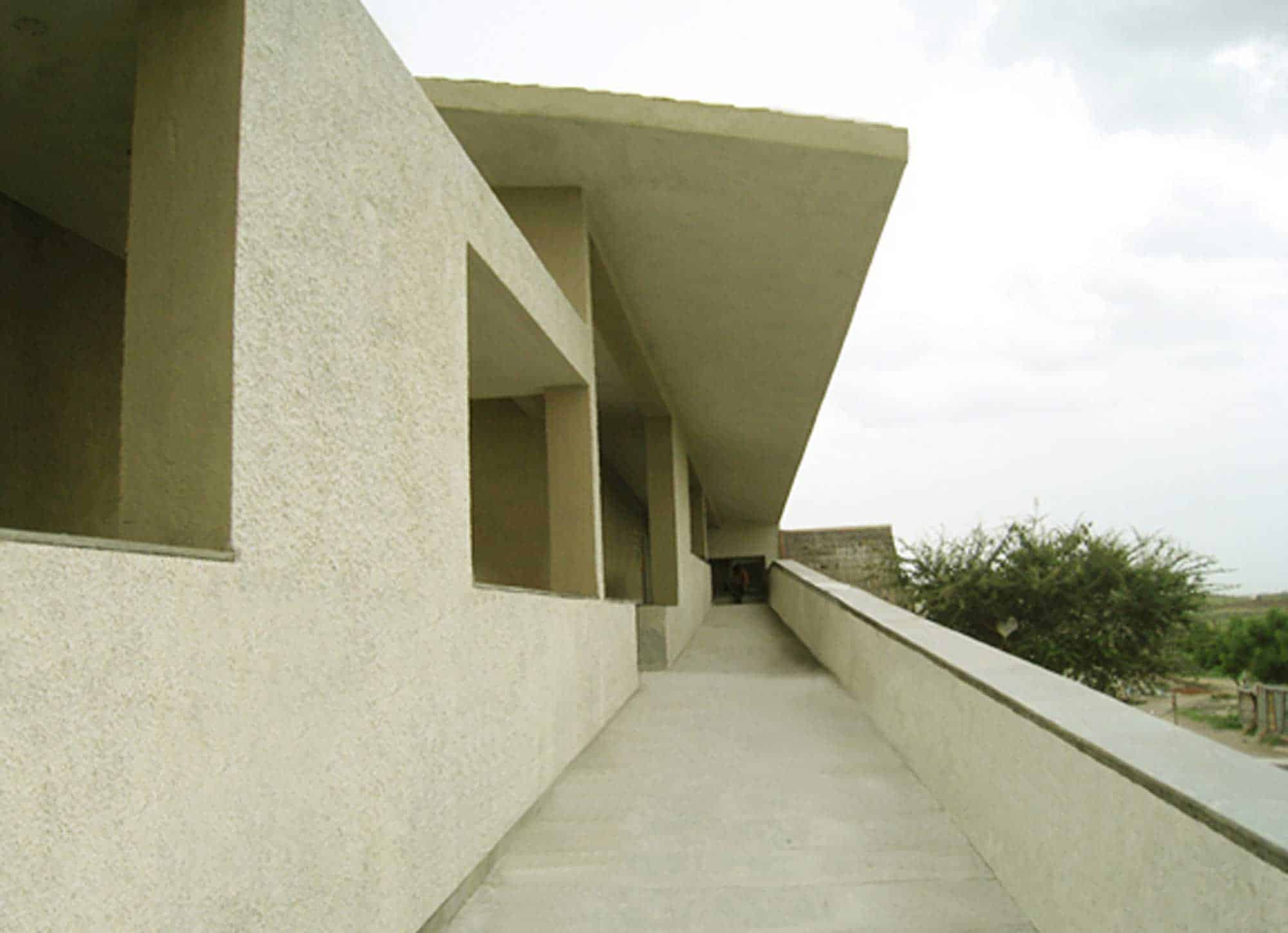
Program and Organisation
The health center is situated amongst the housing community and envisioned as a single linear unit with three smaller blocks within. The organization and orientation is primarily determined by the undulating nature of the site. These are connected to the road by a ramp that transcends the constant slope of the site. The first block has public programs such as the pharmacy and the consult room; the second block is the observation room for five patients and the third block is an ancillary utility block which houses the nurses area and a kitchen.

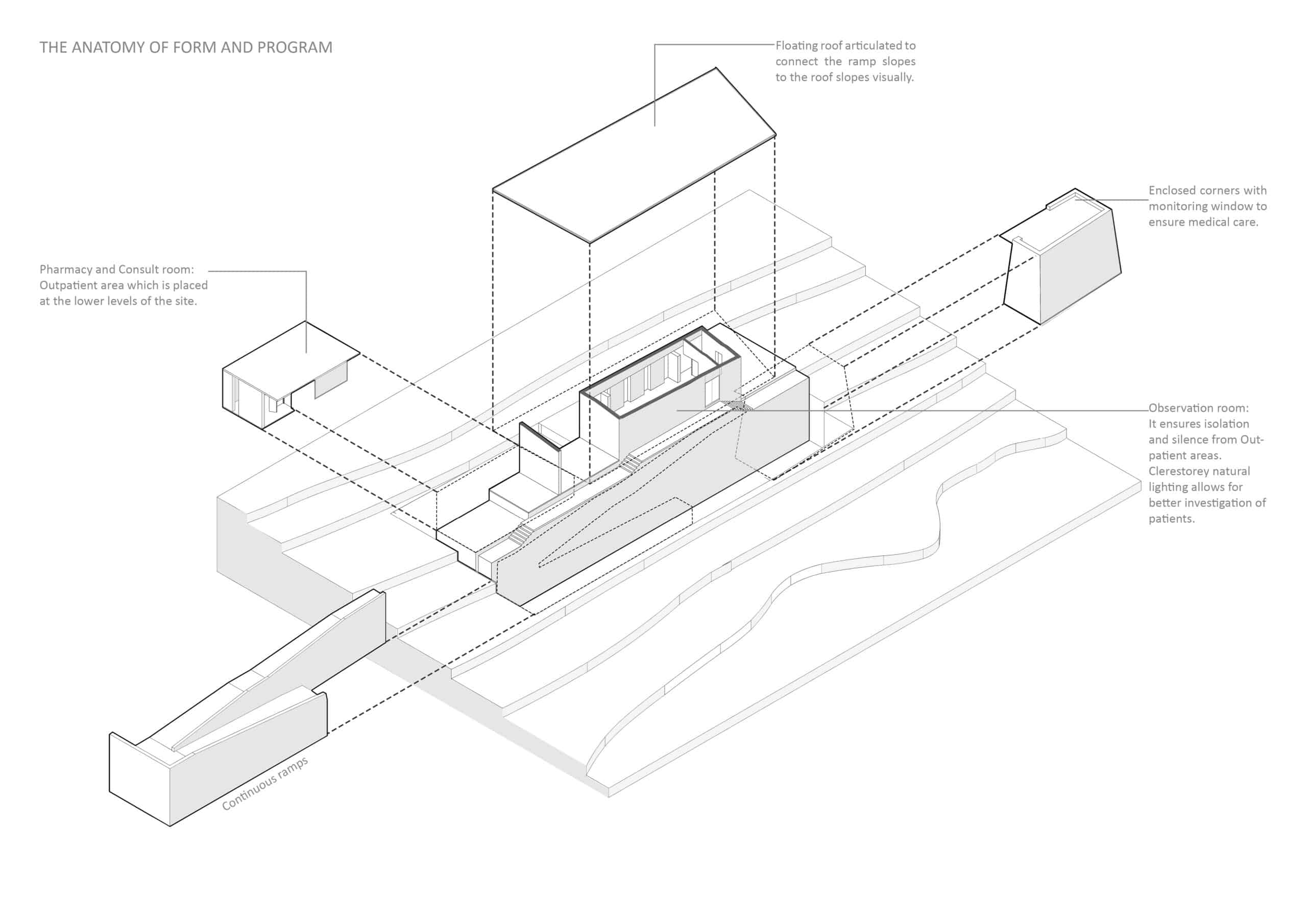
Design for social purpose and overall plan
The central void is a flexible space that invites the community within. The waiting area in the void transforms into a social space for different activities such as health awareness camps and other common student activities at different times in the day.

The strategies used for design and selection of materials emerges from an environmental concern. The use of fly-ash bricks, random rubble exposed masonry of locally available basalt stone, minimizing cut and fill, retaining the trees on site all allow for a building type that sits gently within its context.
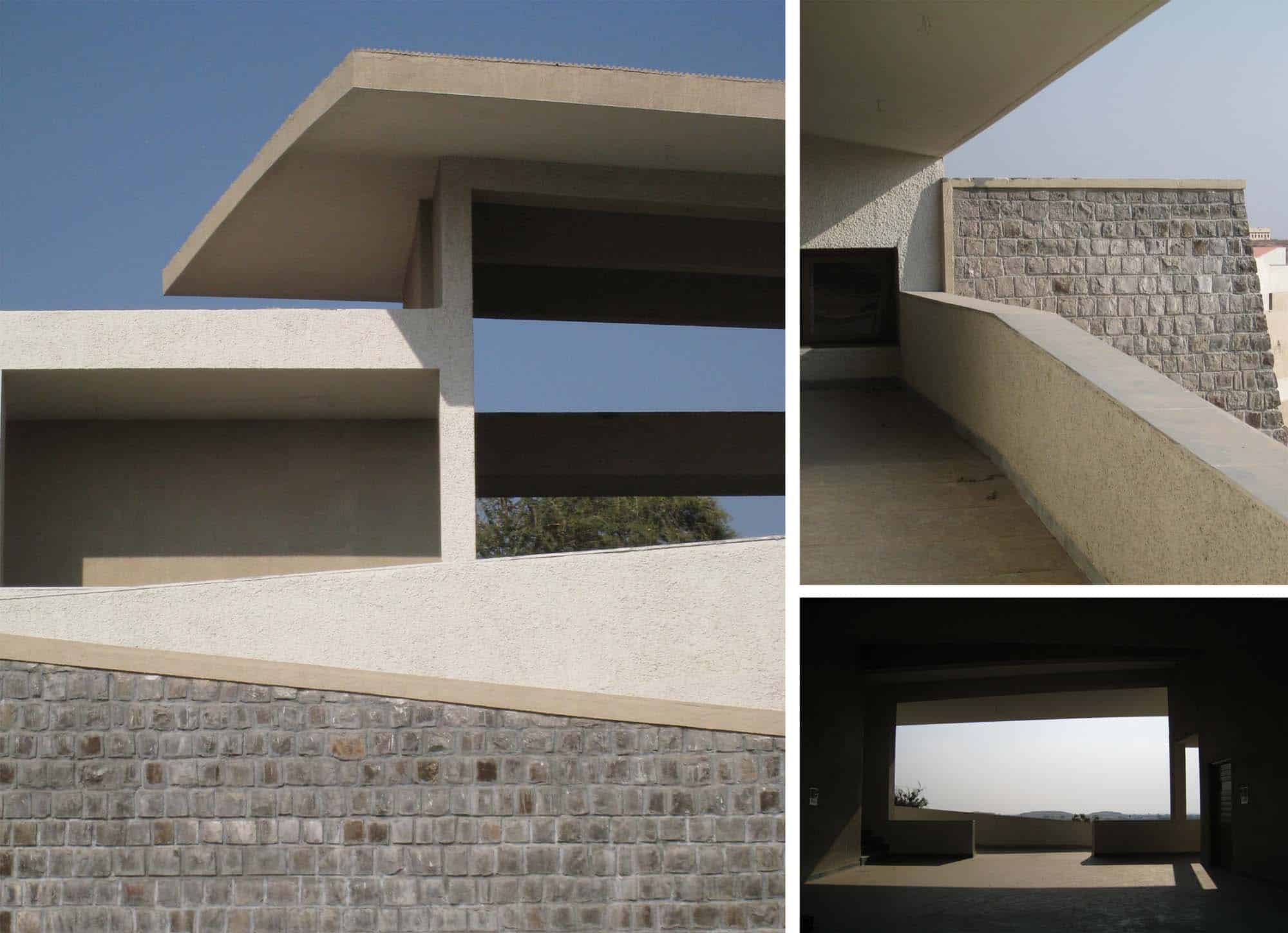
Design for overall wellness
The building becomes a prototype for the larger shared programs by integrating the landscape as an essential part of the design in relation to the built form. The three blocks are treated with exposed rubble masonry externally connecting the singular sloping roof, with its four corners at different heights. This helps achieve high spatial volumes as well as adequate light and ventilation within the structure. The built form constantly negotiates the levels of a sloping site to remain integrated with the surrounding landscape. The porous waiting area in the center acts as a bridge that overlooks both the hill above and the town on the lower levels beyond the site connecting the three blocks. Using design as a tool in this case and taking advantage of the scenic setting we create spaces that allows us to minimize some anxiousness usually associated with waiting areas in healthcare centers as we move towards providing holistic care facilities.


